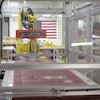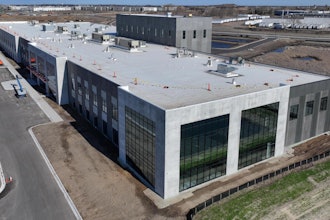As the pace of business continues to rise, companies in the manufacturing sector face challenges from all directions. Due to an increasingly diverse and discerning customer base, manufacturers are forced to utilize mass customization techniques, resulting in an increase in various products and a complex production line. Larger, mainstream brands are also capitalizing on this consumer trend by acquiring niche product manufacturers, which creates the challenge of integrating different scales and modes of production without compromising efficiency. Keeping up with the demanding pace of consumerism requires shorter lead times. The rise of manufacturing in developing countries creates an economic challenge — the need to compete against imports with better quality and service at a lower price point.
Complacency is not an option. Manufacturers need to maximize their gains at every step of the decision-making process to stay ahead of the curve. Many companies suffer from a significant disconnect between strategy and operations: ineffective communication between the executive suite and the shop floor. When asked what constitutes a good decision, those responsible for execution typically apply criteria far removed from the business goals or key performance indicators (KPI) defined during the long-term planning process. In other words, the decisions made about your business in the moment ― when many of the most critical decisions have to be made ― may not drive your business in the direction you originally intended.
The definition of “decision maker” is by necessity becoming broader and more democratic. The global supply chain never stops ― decisions have to be made 24 hours a day, seven days a week. In order to rise to the challenge, company leaders need to focus on their business goals, and make the best decisions for their company ― from shop floor to top shelf.
Every Decision Matters
A spur-of-the-moment decision made by a person on the shop floor may seem inconsequential, but in reality, it has the potential to make an impact on your company’s bottom line. It is therefore important for higher-level KPIs to be propagated to every department in the company, no matter how far removed they may seem from upper management.
To keep company goals on track, an integrated approach to planning is key. Ideally, all planning and scheduling activities should be done in a consolidated planning department, with very few boundaries ― whether physical or bureaucratic ― to hinder the propagation of information between different departments. Realistically, this may not be feasible for many companies as it involves heavy corporate restructuring. However, the right solution can encourage integrated planning without the need for such radical change.
Going From Good to Great
A good scheduling solution increases efficiency and productivity on the shop floor, manages disruptions in real time and assists in maintaining a high KPI satisfaction level. A great solution does the same, with the added advantage of ensuring that all decisions are in line with the company’s higher-level goals.
Four key aspects of a great scheduling solution are:
No. 1 - Ensure that all levels have visibility into the long-term goals of the company
A company’s long-term goals are not set in stone ― factors such as shifting demand, fluctuating commodity prices and market trends can trigger change. While long-term higher-level goals are on a different time horizon than short-term scheduling goals, neither are isolated from the other ― they are connected and should be realigned when changes occur. Employees will make decisions based on what they know. To empower them to make the best decisions for the company ― and not just for their department ― there has to be a cohesive, interconnected approach to planning and scheduling. This approach hinges on every department working in line with the higher level KPIs, and requires an unhindered flow of information throughout the company.
Most importantly, the flow of information cannot be unidirectional: there has to be corresponding feedback from the lower levels ― in this case, scheduling ― to the higher-level departments. This feedback loop enables higher-level departments to set goals that are feasible and supports lower-level departments in contributing more directly to the company’s goals.
No. 2 - Ensure that scheduling is goal-driven and has the right KPIs
Every planning level has multiple KPIs, which can be conflicting ― for example, short delivery lead times may conflict with the aim of keeping inventories low. Inevitably, compromises have to be made. Higher-level KPIs should be used as the basis for setting goals in every department, including scheduling.
Visibility is key ― schedulers must be made aware of the company’s overall goals, even those that do not directly affect production. To empower schedulers in making the right decisions, they need to also be given clarity on how higher-level KPIs affect their own goals, and how their goals can be aligned to contribute to the bottom line.
No. 3 - Ensure that production KPIs are aligned with scheduling and the long-term goals of the company
A misalignment in KPIs can mean that despite increased productivity on the shop floor, the company’s goals are still not met. While maximizing output may be a common production KPI, it does not automatically lead to financial gain; in fact, it can lead to higher costs and decreased profit.
Production KPIs therefore need to be set while being mindful of KPIs from other departments such as sales, production and supply chain. A scheduling solution that integrates into MES and S&OP infrastructure can ensure that production KPIs are aligned with scheduling, which in turn are aligned with higher-level KPIs. The result? A high level of efficient productivity contributes to the company’s long-term goals while adhering to their own short-term targets.
No. 4 - Ensure that scheduling can react when priorities of long-term goals shift
While a company’s long-term goals are important as a whole, it is crucial that planners and schedulers understand that not all goals are of equal priority. Creating an optimal balance between the different goals is essential. Conversely, a completely equal compromise between goals produces results that are less than ideal.
As higher-level goals are planned on a longer time horizon, the priorities can shift as conditions change. Schedulers need to be agile and responsive to these shifts to ensure that the changes can be incorporated without adversely disrupting the current plan. The right scheduling solution can assist by realigning and re-optimizing scheduling KPIs quickly. This ensures that momentum and productivity are not lost, while remaining compliant and supportive to the company’s long-term goals.
Keep Your Eye on the Bottom Line
The essentials for a successful optimization of your operations are within reach without heavy corporate restructuring. Shifting goals can be managed and production efficiency can be optimized across your company when you implement a fully integrated scheduling solution. A solution that provides visibility to planning, scheduling and execution, combined with real-time optimization and decision support will ensure that your scheduling KPIs will align and support your company’s high-level goals.
Koen Jacobs is Business Unit Director of Manufacturing at Quintiq.























